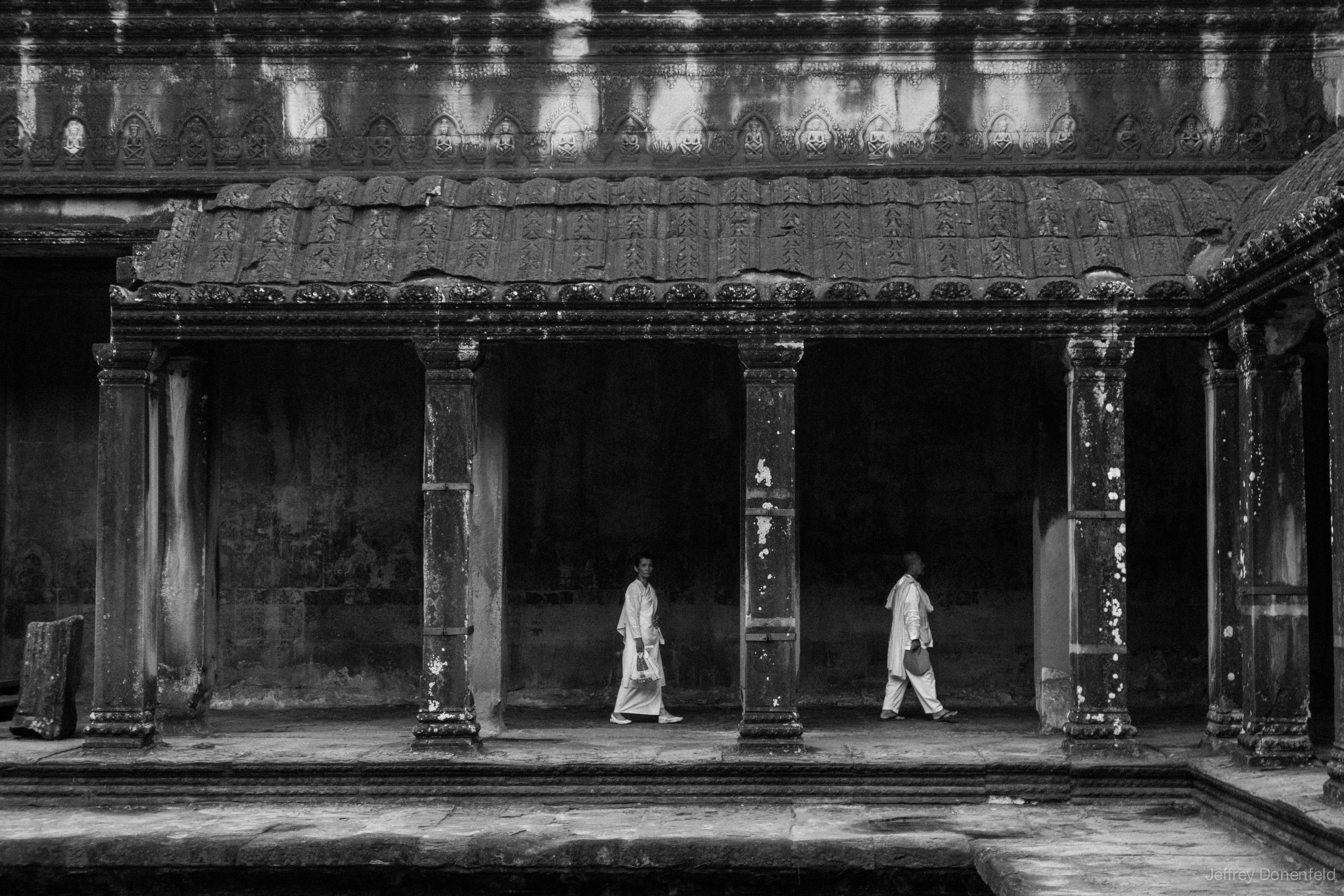Angkor Wat, Cambodia – finally my opportunity to visit the world’s largest religious monument – and I was completely tired out and bored with visiting religious monuments. Initially the whole situation was a bit depressing – but it turned out better than I could have expected, and I had an incredible time exploring this epically large complex.
Angkor Wat was a place I definitely wanted to visit – however, I was burnt out on visiting monuments, and learning about random bits of history. I did, however, want to have a day of shooting photos there. So instead of hiring a tour guide, I paired up with local photojournalist George Nickels. George and I met up in Siem Reap early in the morning, and took a TukTuk over to the site in time to watch the sunrise. George had been to Angkor Wat countless times, and knew a few great places to take photos. I especially appreciated exploring the area with another fellow photographer – we both understood the time eachother needed to climb around and set up shots, and had incredibly productive conversation about photography while walking between sites. During my day shooting with George, I was using both my Sony RX100 and a borrowed Canon 60D. Unfortunately, the photos I took on the Canon were lost in transit, but I did recover a few shot on the RX100.
Angkor Wat (Khmer: ?????????) is a Hindu, then subsequently Buddhist temple complex and the largest religious monument in the world. The temple was built by the Khmer King Suryavarman II in the early 12th century in Yasodharapura (Khmer: ?????????, present-day Angkor), the capital of the Khmer Empire, as his state temple and eventual mausoleum. Breaking from the Shaivism tradition of previous kings, Angkor Wat was instead dedicated to Vishnu. As the best-preserved temple at the site, it is the only one to have remained a significant religious centre since its foundation – first Hindu, then Buddhist. The temple is at the top of the high classical style of Khmer architecture. It has become a symbol of Cambodia,[1] appearing on its national flag, and it is the country’s prime attraction for visitors.
Angkor Wat combines two basic plans of Khmer temple architecture: the temple mountain and the later galleried temple, based on early Dravidian Architecture, with key features such as the Jagati. It is designed to represent Mount Meru, home of the devas in Hindu mythology: within a moat and an outer wall 3.6 kilometres (2.2 mi) long are three rectangular galleries, each raised above the next. At the centre of the temple stands a quincunx of towers. Unlike most Angkorian temples, Angkor Wat is oriented to the west; scholars are divided as to the significance of this. The temple is admired for the grandeur and harmony of the architecture, its extensive bas-reliefs, and for the numerous devatas adorning its walls.
The modern name, Angkor Wat, means “Temple City” or “City of Temples” in Khmer; Angkor, meaning “city” or “capital city”, is a vernacular form of the word nokor (???), which comes from the Sanskrit word nagara (???).[2] Wat is the Khmer word for “temple grounds”, derived from the Pali word “vatta” (????).[3] Prior to this time the temple was known as Preah Pisnulok (Vara Vishnuloka in Sanskrit), after the posthumous title of its founder.[4]
























Comments
2 responses to “Exploring Angkor Wat, Cambodia”
Great pics Jeffrey! Over my half-year trip across SE Asia, my 2-day trip through the Angkor area was a highlight.
Was that photo from sunrise with the reflecting pool in the front? Awesome! It was too overcast on the days we went, but we still got some great shots.
If interested, I just posted about my experiences with a captioned photo driven post of the incredible temples here
Thank you!